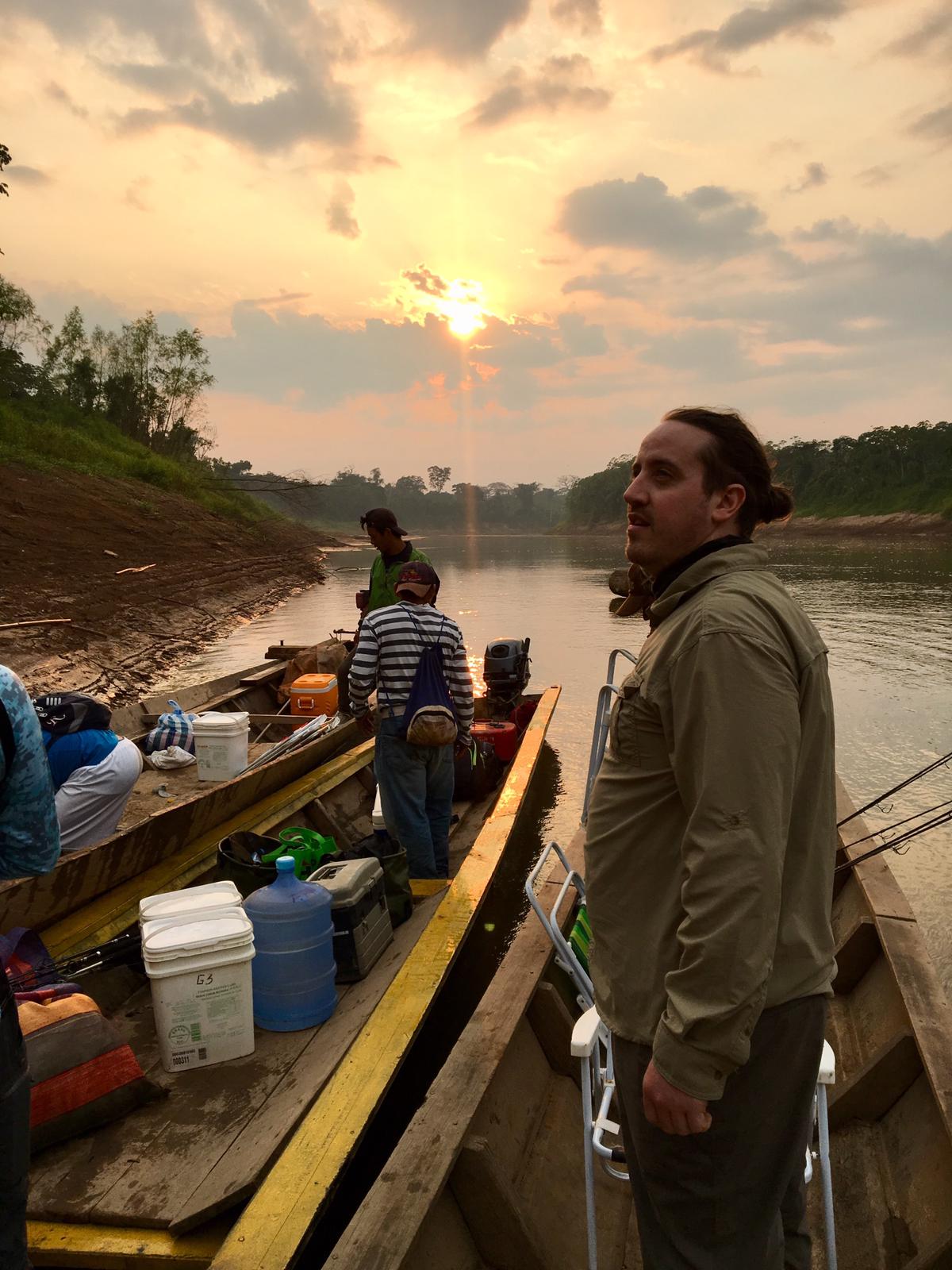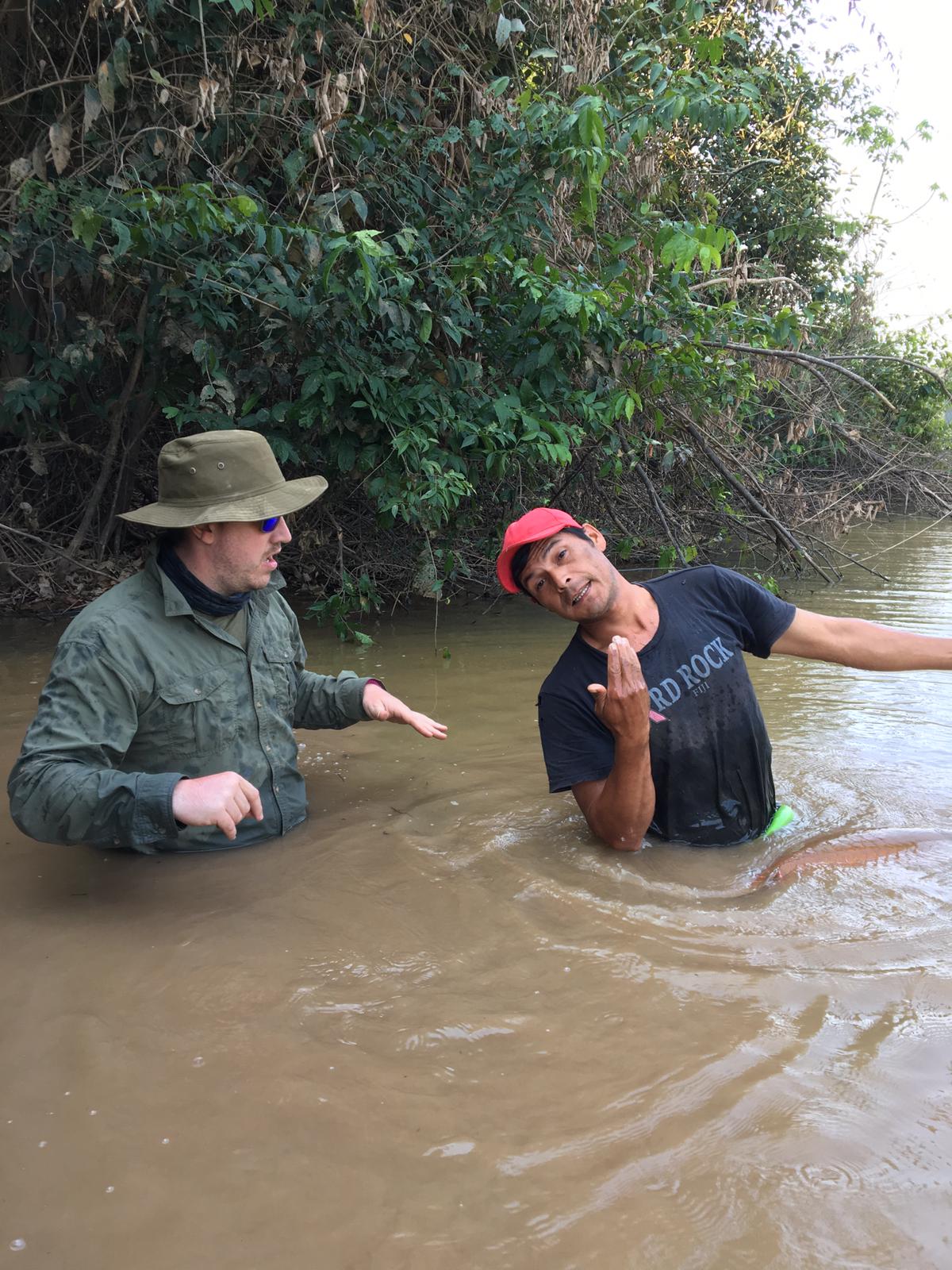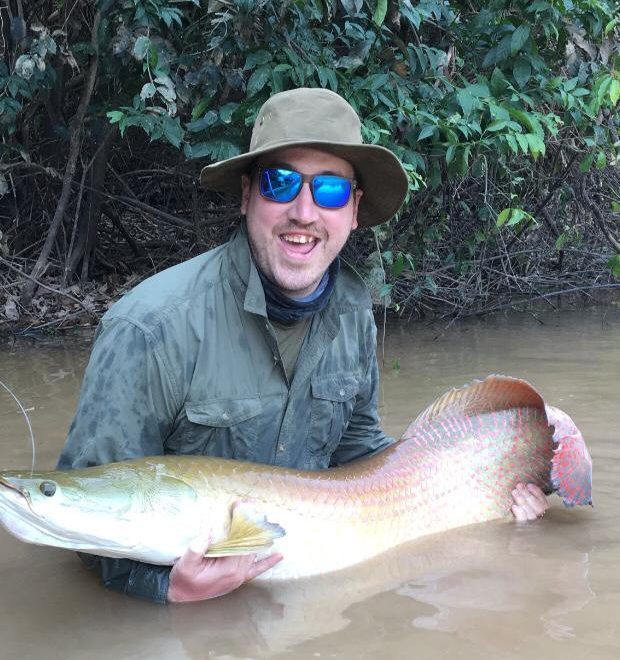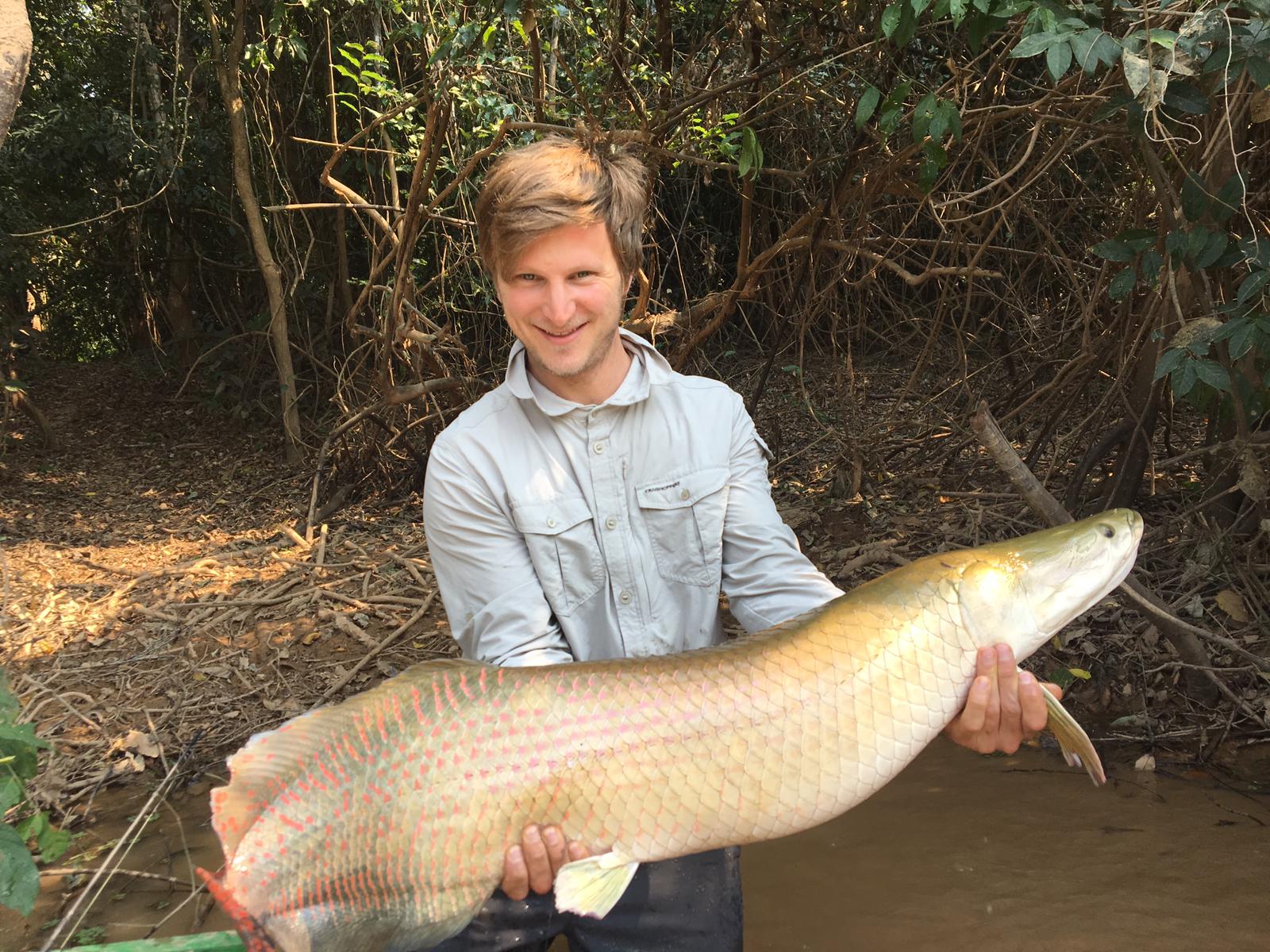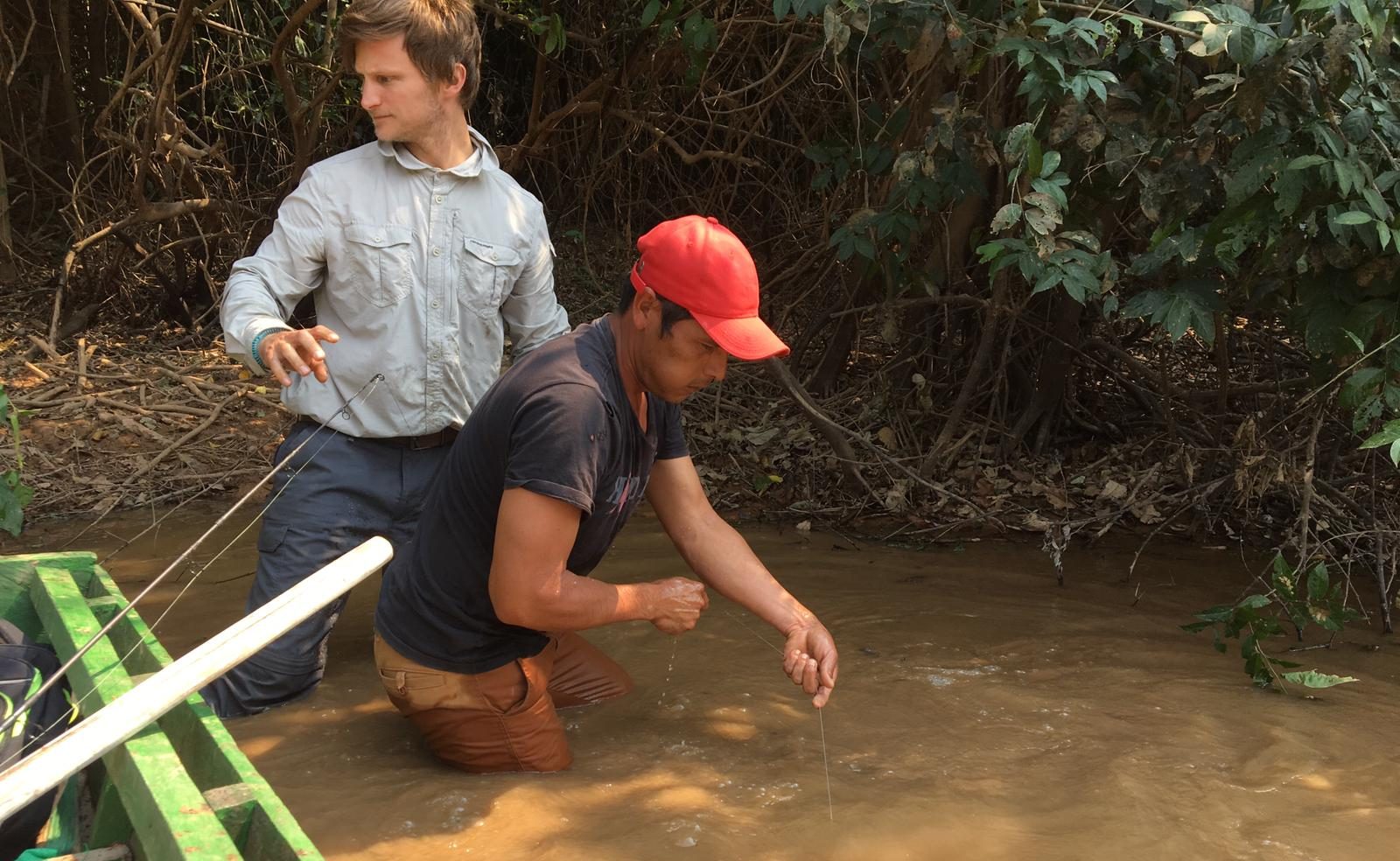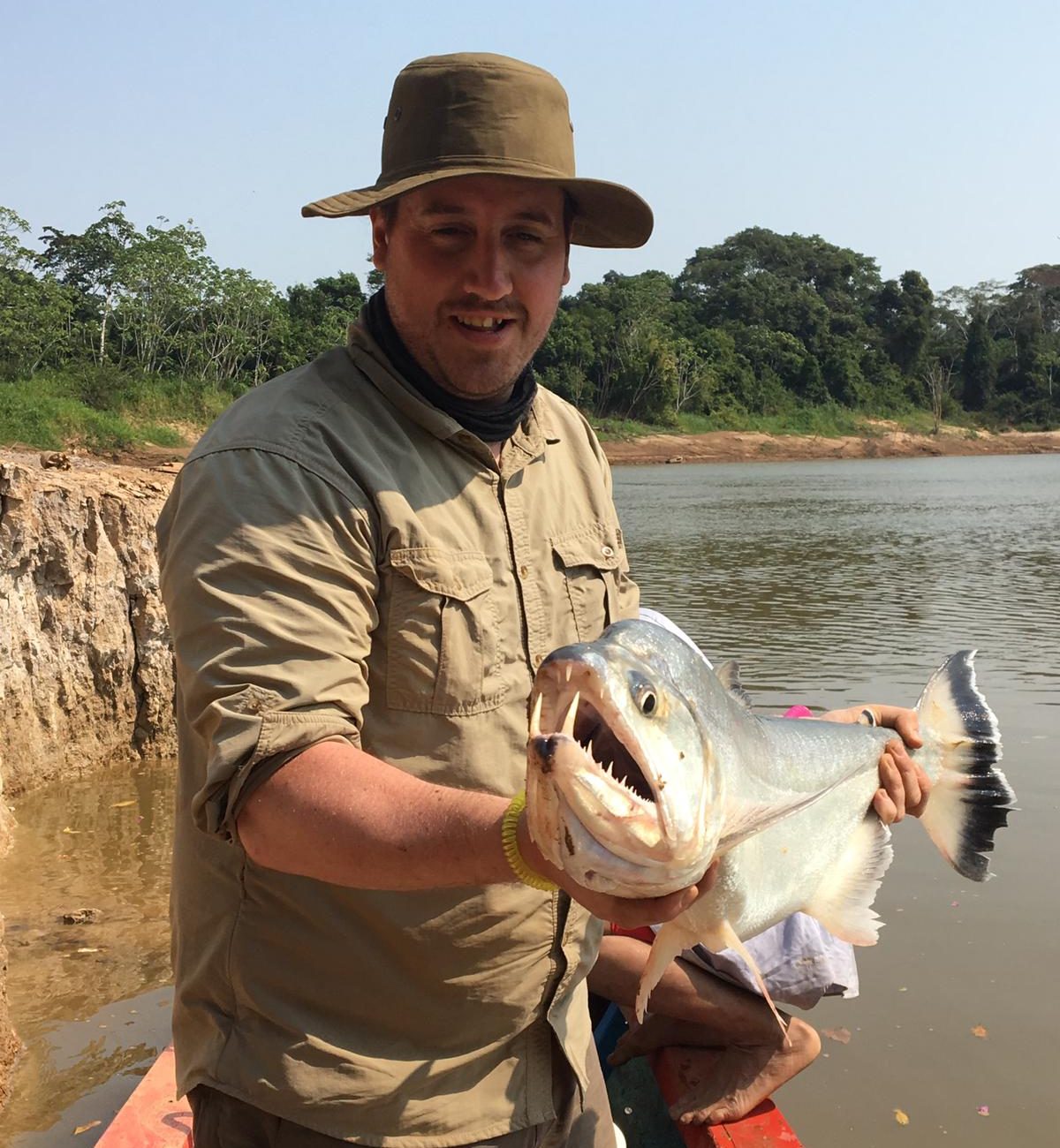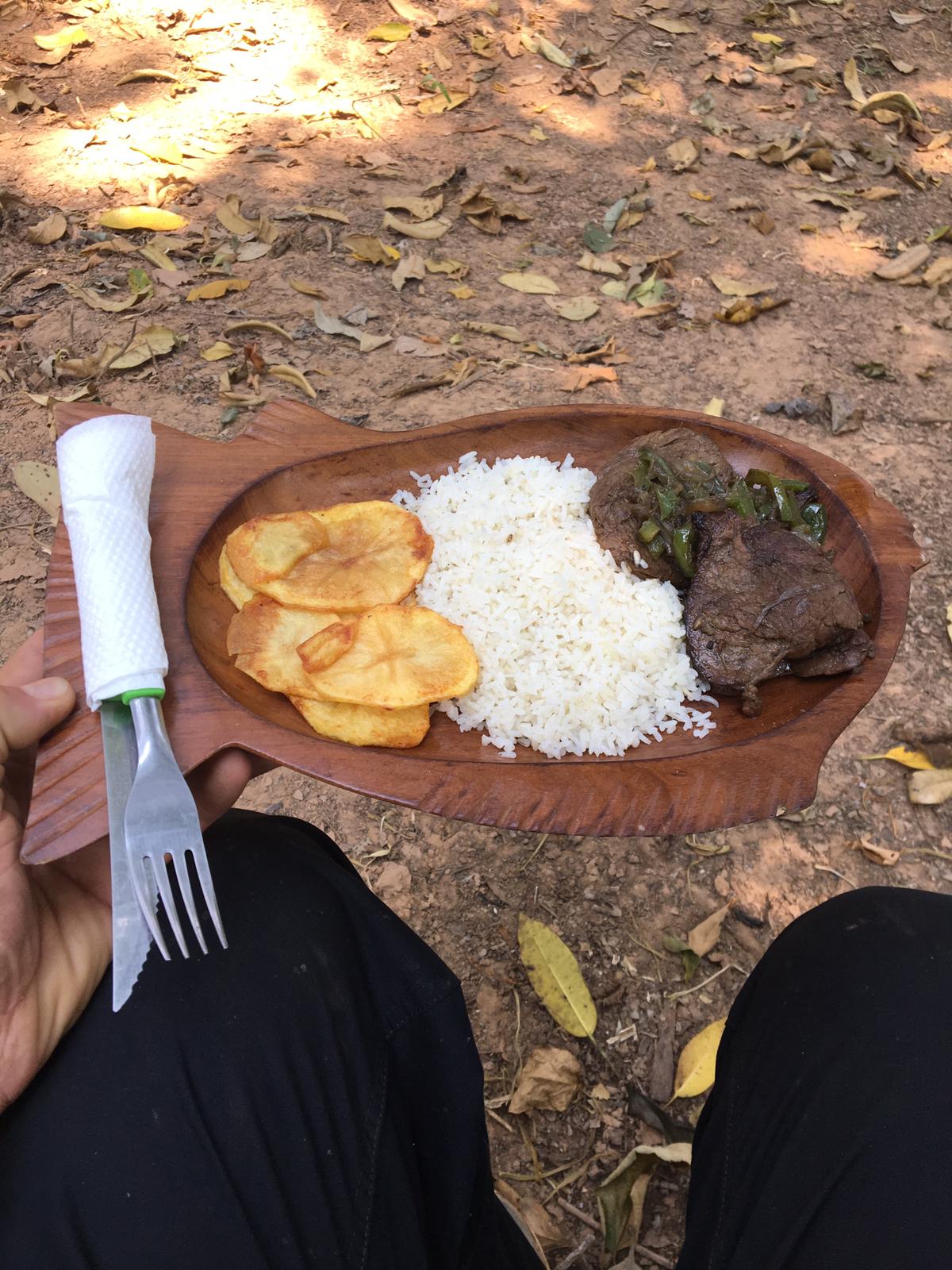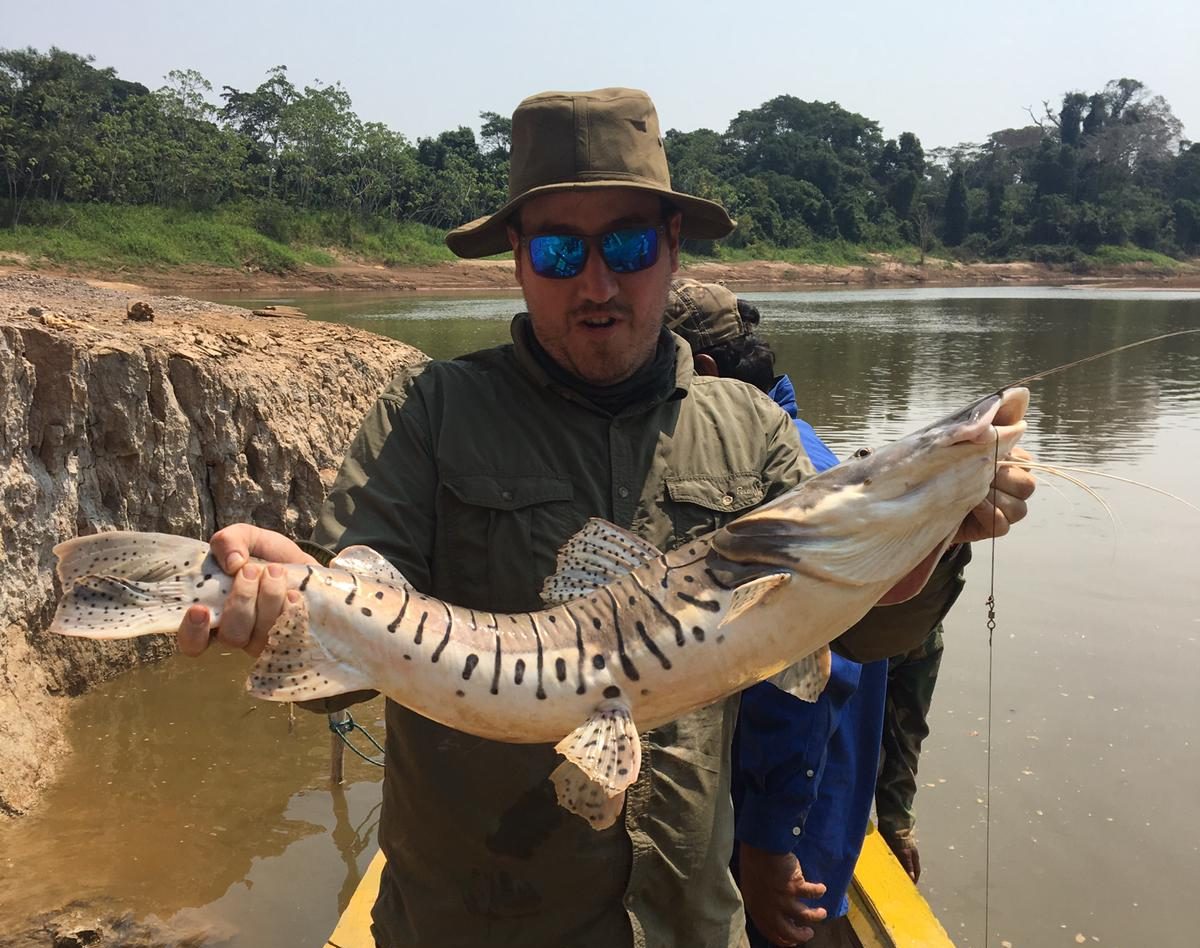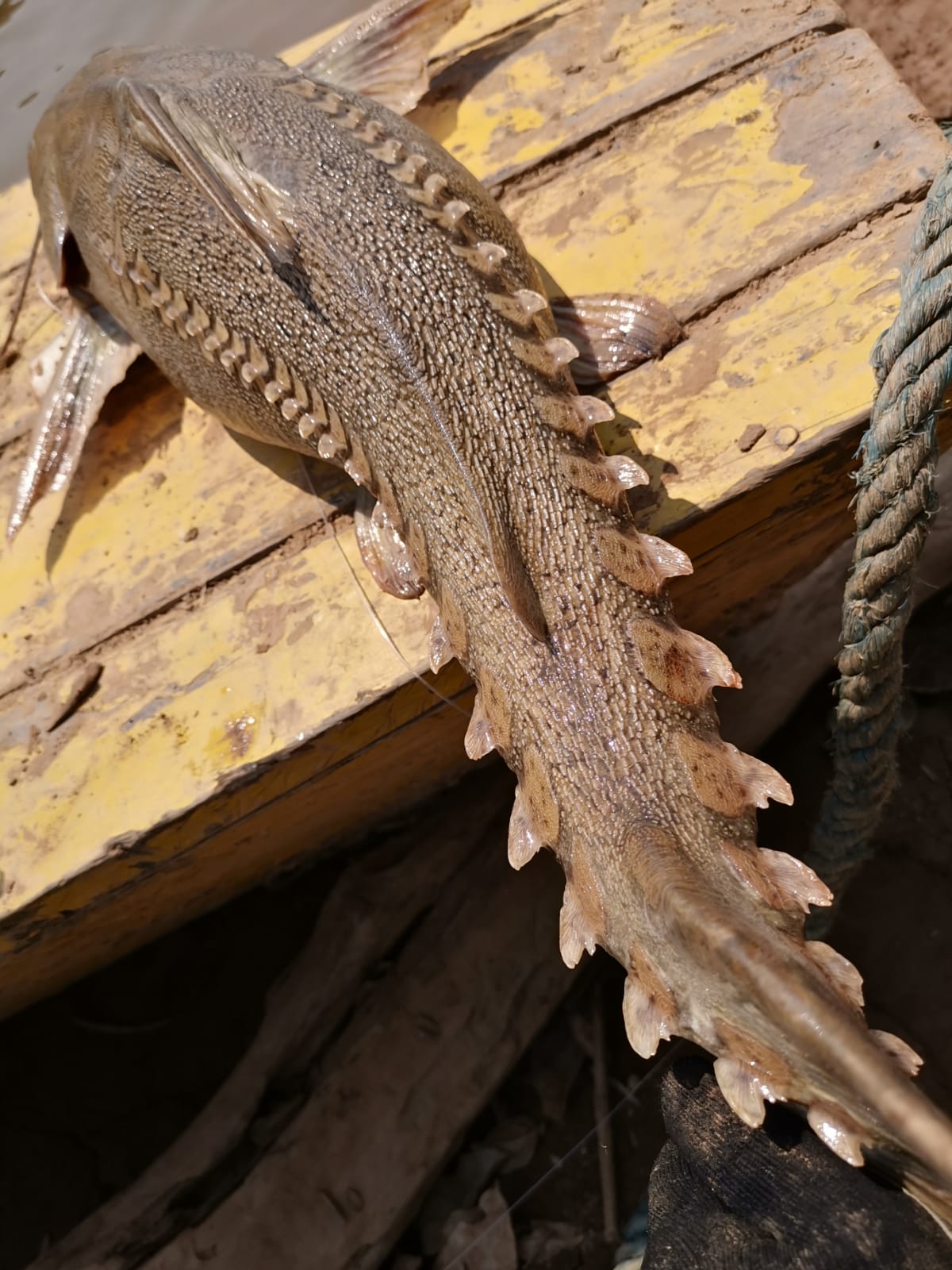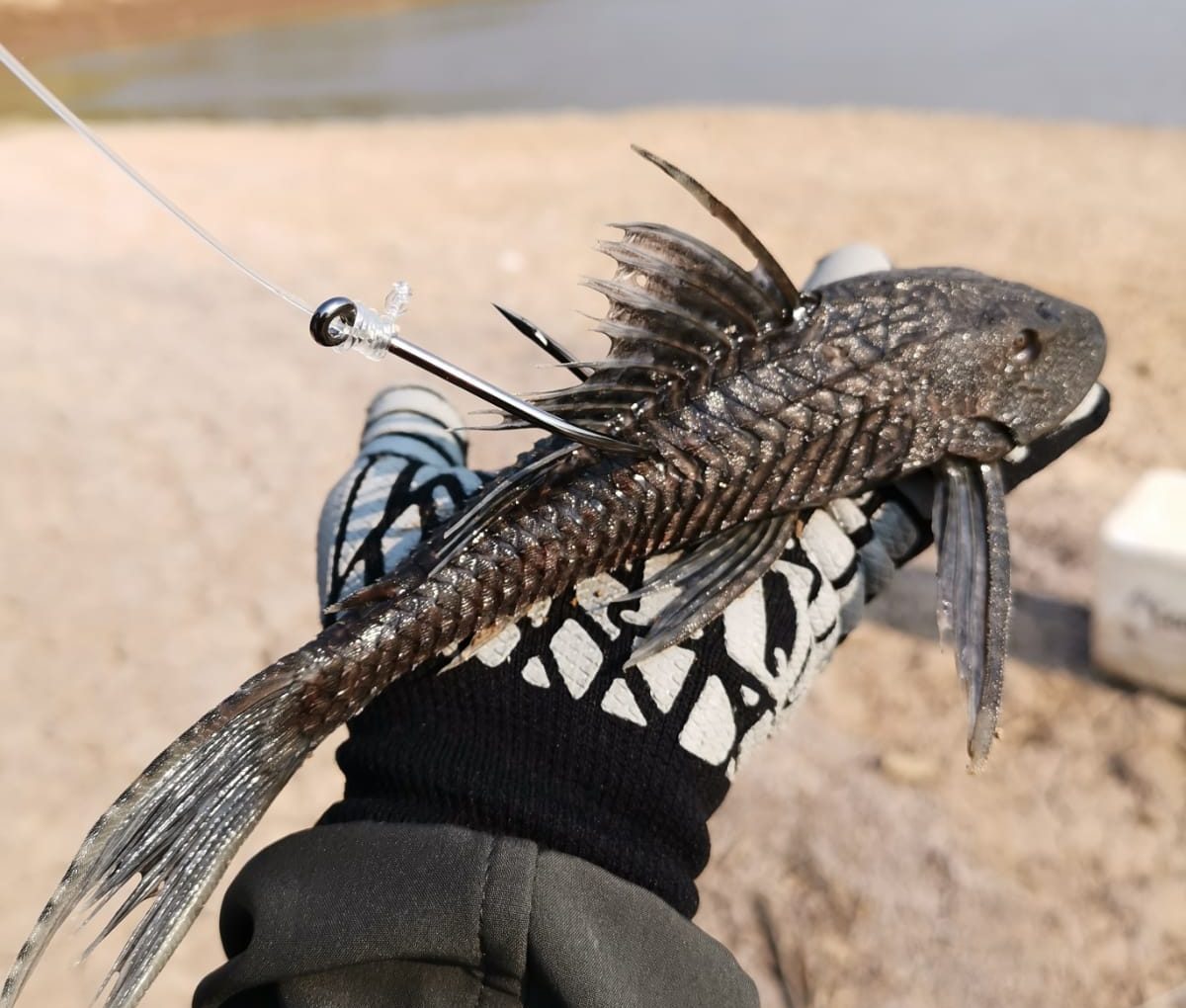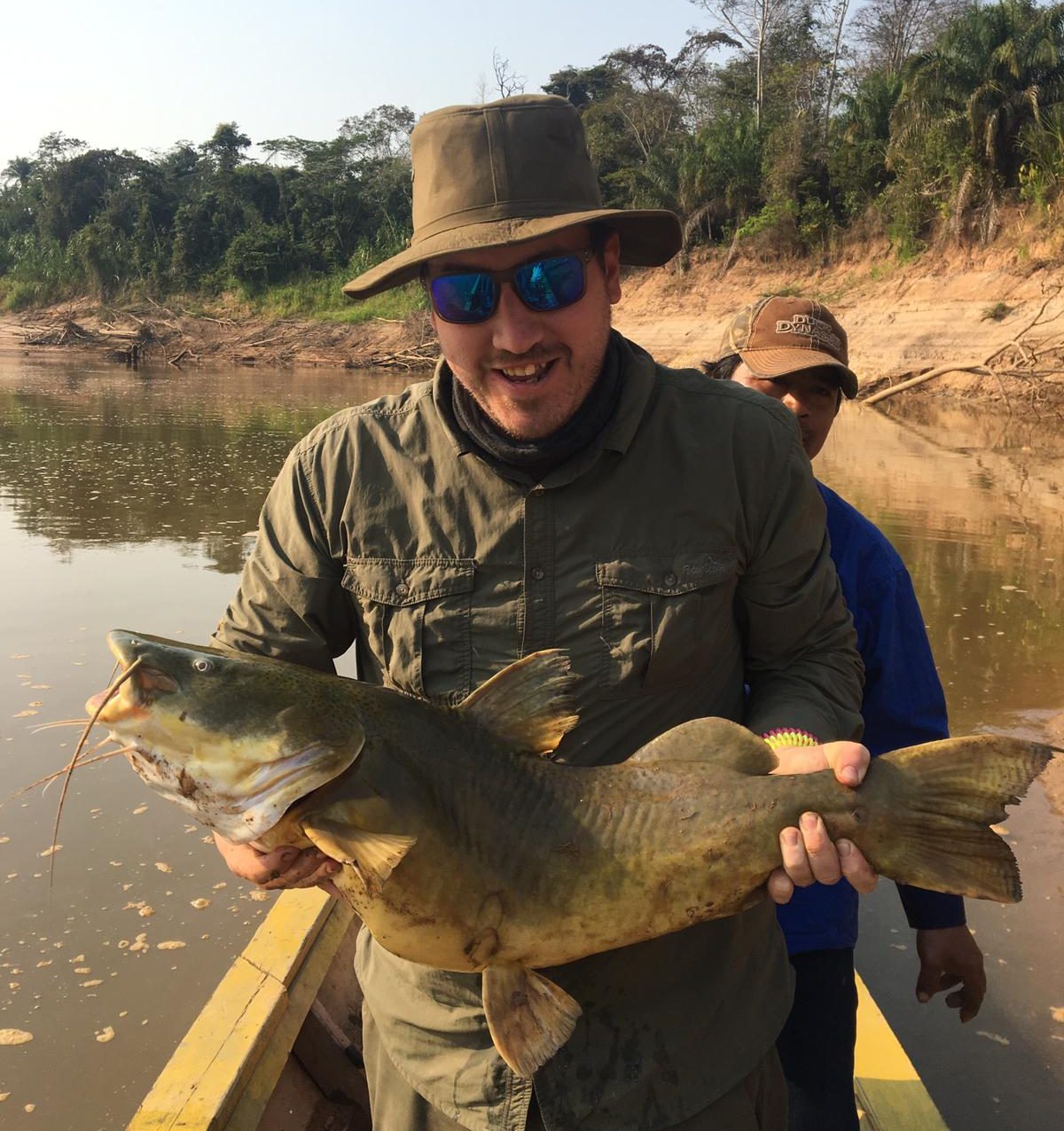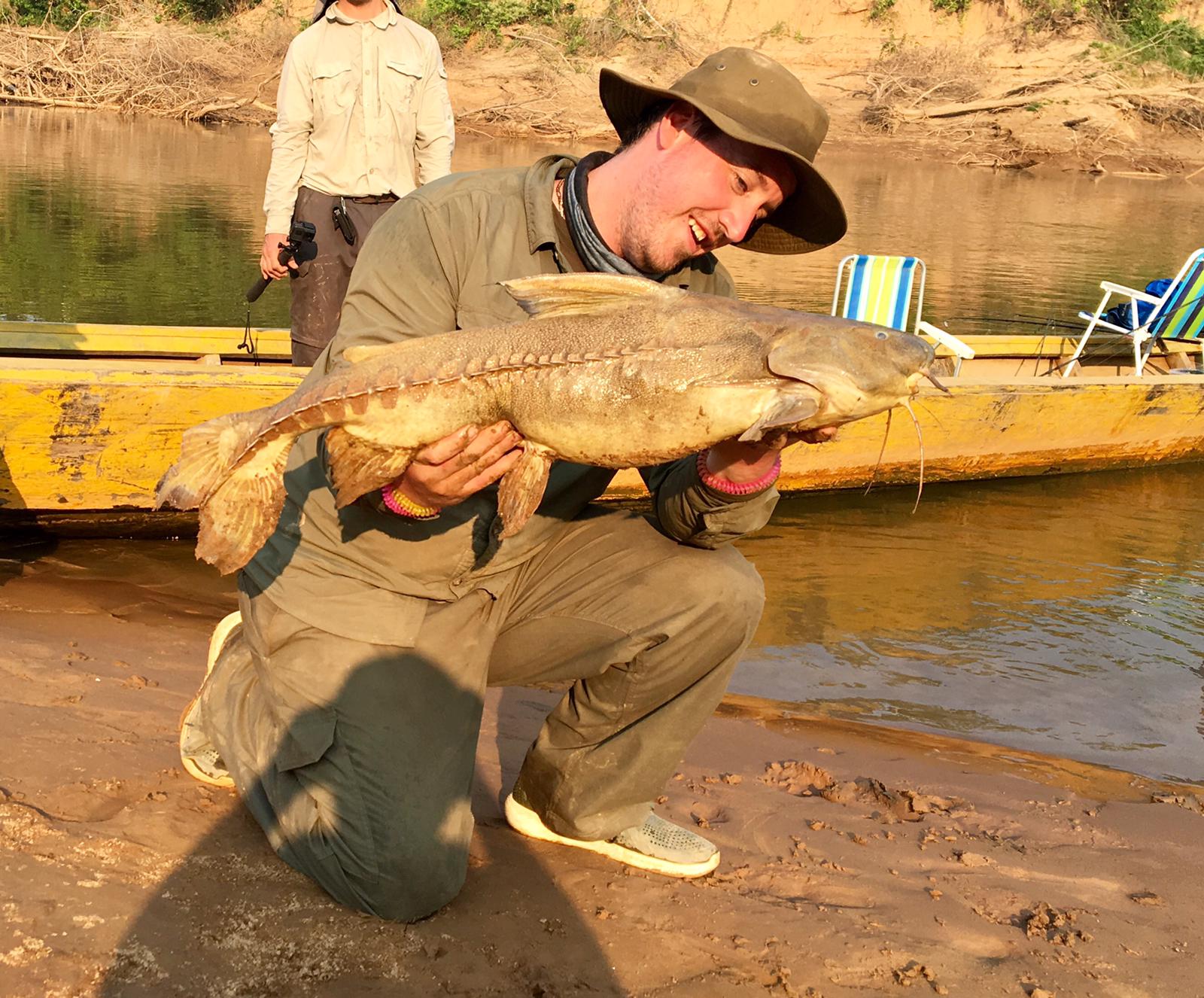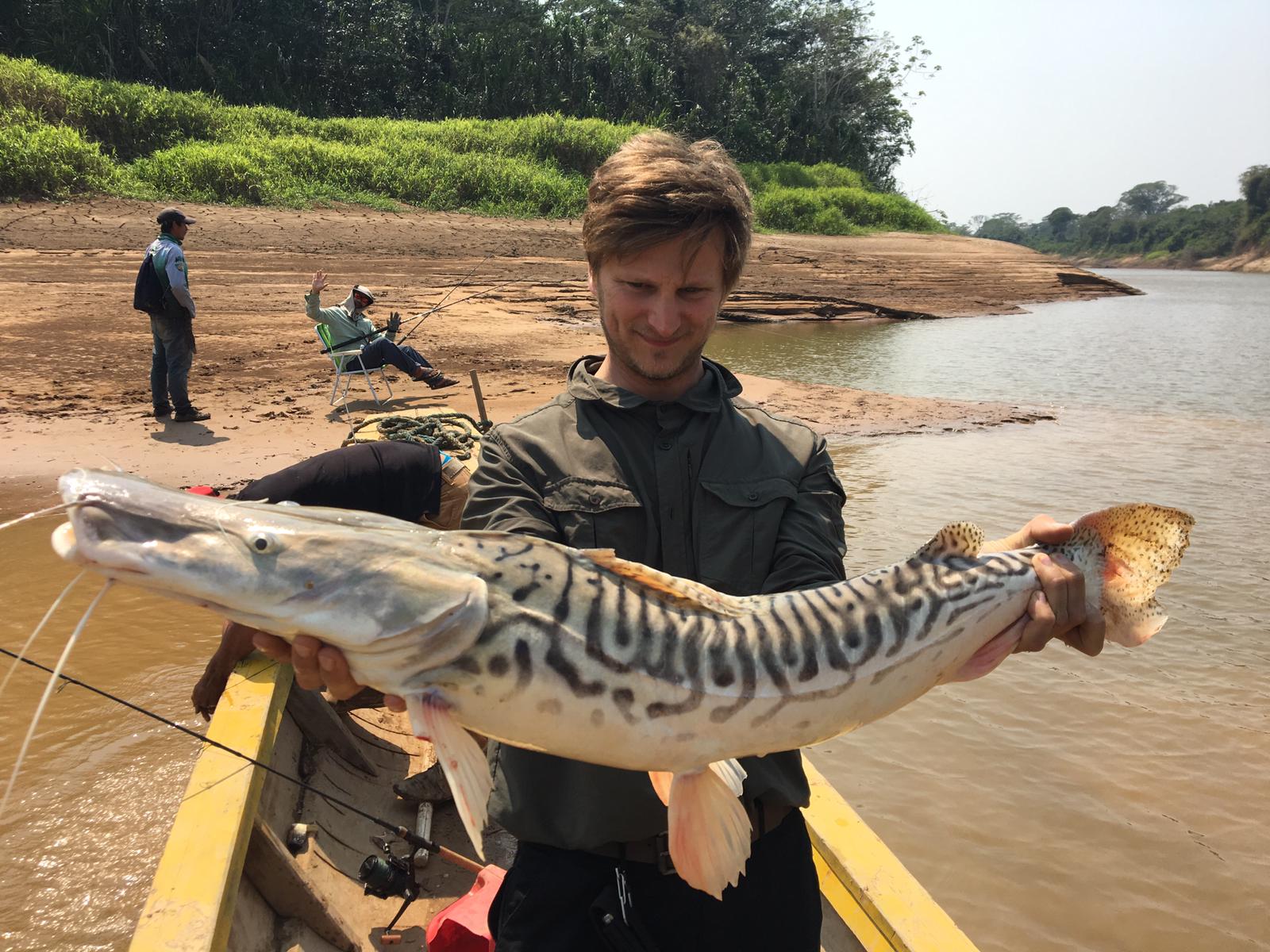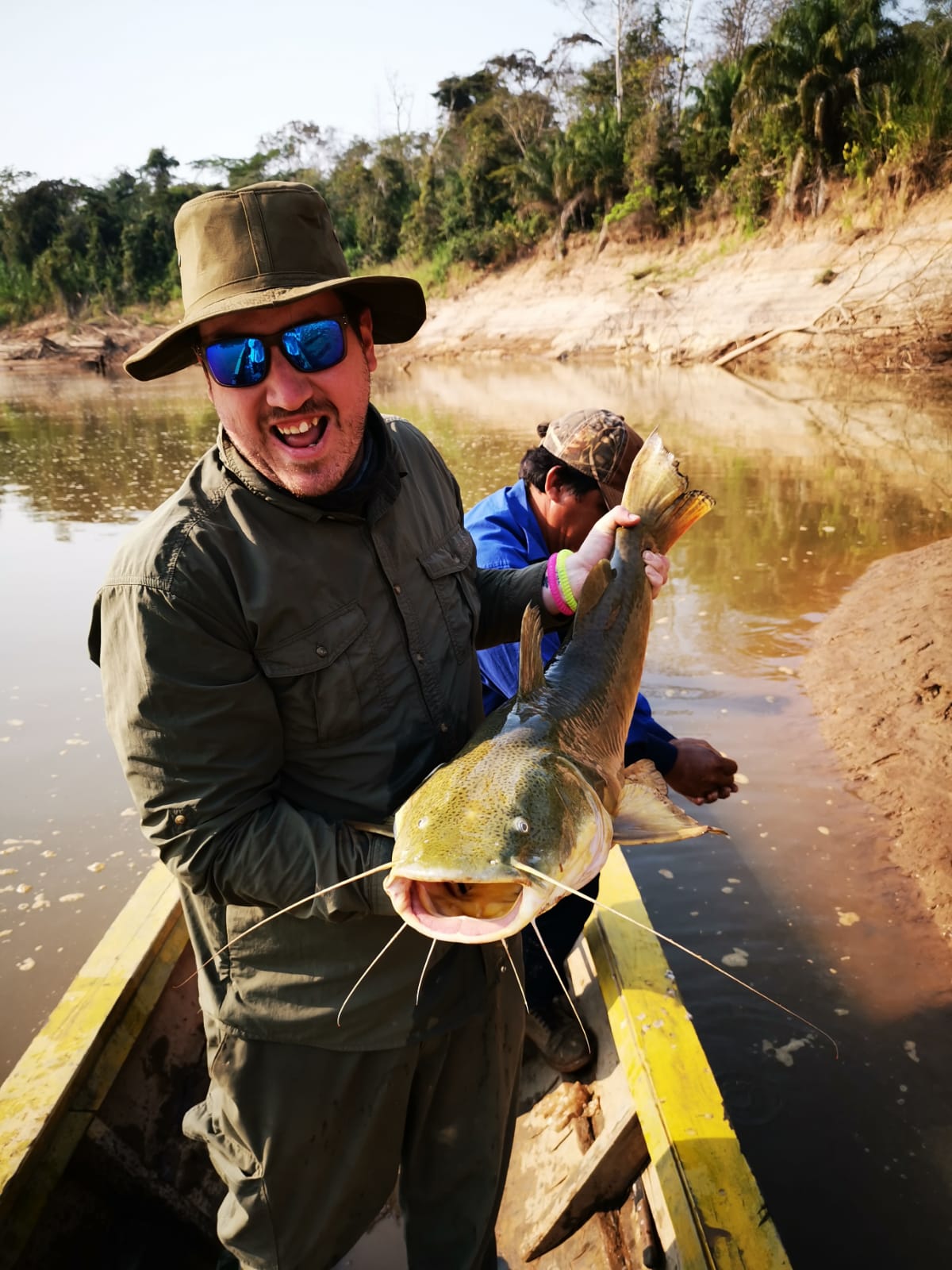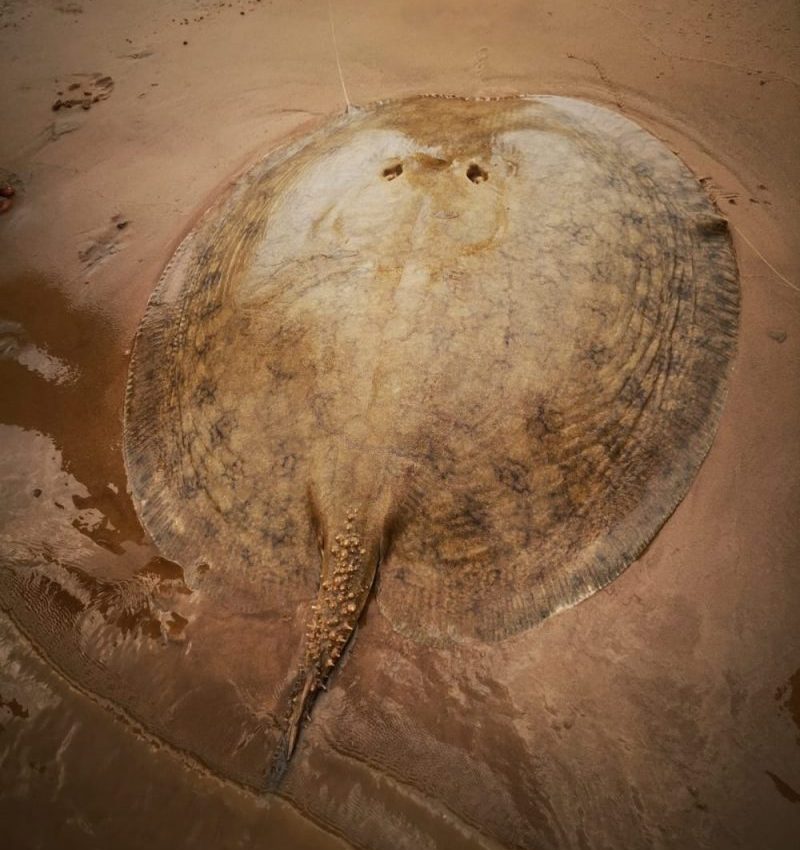Words can not describe just how incredible it is to be fishing in the most natural place on our planet. Even if I had not caught a thing, the experience would have trumped everything I've done, the fish are a bonus.
The Amazon, home to some of the most sought-after fishing on the planet.
A place where many anglers dream of visiting but don’t ever go, believing it to be impossible and sticking to watching it on TV dreaming about it being a reality.
I’m here to tell you it isn’t impossible, in fact its achievable for you, to prove it here’s some highlights from day 1 of our trip in August.
The fishing, the environment, the people and the experience as a whole was absolutely awe-inspiring. So much so that since we returned we’ve been working with the same team we travelled with to open it up to y0u!
So, now I’m pleased to announce that we can help you live your dream, just like we did.
If fishing in the Amazon is on your bucket list, lets make it happen together!
Our Amazon Fishing Tour in Detail
Ready to Tour the Amazon Like Jeremey Wade?
Sample Itinerary: Your Amazon tour in detail
Our private guides have been helping anglers like you dreaming of fishing in the Amazon for over a decade and spend their lives taking fisherman to remote places around the world – they have a hard life – so rest assured this is all in a days work for them, slightly harder for us mere mortals.
You can book Amazon fishing tours online and go direct, but thats what we did and as you’ll read below it was our biggest regret.
Other guides will help you with all the details, but as with everything, they won’t tell you the fine print or the bad points in your language. That’s where we’ve got you covered.
Rather than give you the annotated version of the trip focusing on the good points, or making everything sound easy and glamorous, here is our story of what actually happened to us and will likely unfold for you.
DAY 1: Travelling
Your first goal is to get to Santa Cruz in Bolivia, this is where your travelling stops and you Amazon fishing tour starts.
There are very few flights available direct from the UK to Bolivia, if any, initially we booked to go to Miami for a stopover first (rude not to).
Unfortunately, our flight was cancelled a few weeks before and we then had to fly to Boston first, on to Miami where we would change to Santa Cruz in Bolivia. No problem.
But, two of those are international flights so not only do you need to deal with the treks across airports but you need to check in your bags full of leads, lures, reels and clothes each step of the way too.
Did we tell you that you need to carry your rods in hand luggage too?
You’ll also want a change of clothes and some stuff to keep your pits smelling handsome.
It’s a mammoth undertaking.
Another way that we can help cut the bits you simply don’t need and travel light.
Boston and Miami airports are fine, lots to do and see (and drink, trust me), a luxury not afforded to you in Santa Cruz.
Each of our flights in the US was met with a 6-8 hour stop over, yours will probably be the same, if you dare book a flight with an hour or two stopover you’re a braver man than me.
Luckily adrenaline was on our side and this time flew by and although it’s a pain, it is 100% worth it and I would do double the travelling at the drop of a hat to experience what is about to come.
When we landed in Santa Cruz, we had a 9 hour wait ahead of, being a large City we were hopeful of a few amenities on site.
Well the easiest answer, no.
With only the cold floor to get ‘comfy’ on, a small cafe, a closed Subway and no-one (including airport staff) who spoke a single word of English, it was a tough 9-hours.
Especially so when we approached the desk to check in for our flight, which is a mission to decipher in itself and the staff said (in Spanglish) that there were no flights to Riberalta that day.
Awks.
Luckily, there was a staff member nearby who was aware of the flight and we were ushered down some dark corridors to security.
While we’re on the matter of security, make sure you’re ready to open up all of your bags at EVERY single security check point, as well as when any member of security looks at you funny.
Especially if like us you carry-on your rods in a Nash Scope rod holdall that looks like a gun case, bad move.
Though it does mean people get out of your way fast in the airport!
Santa Cruz airport is tiny, luckily from there all the flights were internal and easier to get on/off with our huge bags and rods.
Your trip to Santa Cruz maybe easier than ours, it was tough and logistically difficult but everything before this is down to you so you will need to organise yourself (or with our help).
From Santa Cruz your flights from here are covered in the price of the tour – Handy.
Next you will board a 50-seater plane to Riberalta, which decided to make a stopover in Trinidad, because, well, they had time and the pilot needed a wee.
If you do this stop, you’ll need to get off the plane, collect your luggage and then check in again in what can only be described as a shed.
After Trinidad you’re underway to Riberalta, an hour or two away, and this is when the last 40 hours of travelling are forgotten and you really start to get excited at the sight of any river or what looks like the jungle.
Riberalta is a tiny town, deep in Bolivia and looking more like something from the TV show Narcos, than a fishing venue.
Here, you will be met by your Amazon fishing tour guide and a couple of local fixers who help organise the logistics of the trip.
“ahh, we’ve made it, now time for some fishing”
Nope.
Next, if there is time you’ll grab some local food before your next flight.
I highly recommend the chicken brain bolognese, pukka.
Your next stop is a local airstrip with a dirt track runway, some 50-year old planes and a couple of 70-something pilots chilling in a shed sipping rum waiting for you.
A tiny 4 seater plane is your taxi to the next stop, a tiny nut farm in the middle of nowhere, and I mean the middle of nowhere:
At this point I was scared, these planes were tiny, I haven’t been on one that size before and didn’t know what to expect.
Luckily my mate was on hand with some banter-logic “well, the planes are 50-years old, the pilots are 60 plus and they haven’t crashed yet”.
Time to board then.
There was us two, the pilot, co-pilot – who was also fishing with us and doing a flying lesson at the same time – and a few dozen eggs in the back.
When you land, you’ll be greeted by the 40 or so locals that live on the small farm, even a pig, cow and chicken if you’re really lucky and they don’t get in the way of the propellors on the runway.
…in such event dinner will be served early.
50-weeks of the year this farm is harvesting brazil nuts, it’s completely isolated from civilisation, I honestly wasn’t expecting it to be so secluded.
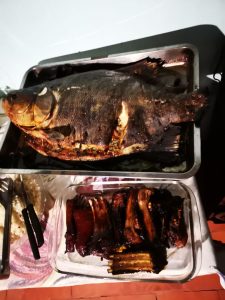
The closest town is 9-days away by boat.
The locals make their own bricks for buildings, harvest all the food you’ll eat that week and have a monthly wage under $100 combined.
You’ve arrived, now it’s time to get your bits off the plane, get unpacked and get ready for the next day on the local lakes or rivers.
That night you’ll gather around for some local food – I think we had arapaima and chips the first night – and discuss the next days fishing.
We decided to go on one of the local lakes first at the recommendation of our guide, being close, it would mean we’d be fishing as soon as possible on day 1 to scratch that itch.
Day 2: Adrenaline
I barely slept that first night.
A few local beers and a grapefruit vodka (highly recommend) helped my cause but I could only imagine what was about to unfold the next day.
Up at 5am tying rigs and getting ready for the 6am wake up call, I was keen and dying to get on the water.
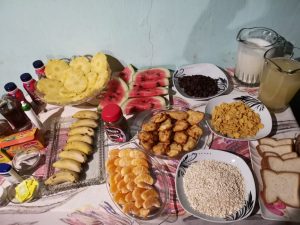
When you get the morning shout for breakfast its time to bounce, get to the food room and tuck in to some local fruits, cereals, breads and eggs.
Don’t expect luxury, you’re in the jungle, the milk is warm and the food is bland but its all as fresh as it gets.
There is no bacon or sausages and the breakfast is a bit dull after a few days, if I’m honest, but it is what it is, you can have your fill on cheerios when you get home.
Next you’ll get on a trailer, towed by a tractor older than my nan, down across the flood plain and towards the closest lakes.
It’s bone jangling stuff on the tight tracks, something you will have to deal with twice a day. Just be prepared for the hits of mozzies on the night time ‘rally’ home.
We were dropped off at the first lake, which was through a clearing in the jungle, made by the locals for us and the few anglers that had trodden our steps before.
Left with a couple of local guides and some water we were almost ready to wet a line.
Our gear was loaded on the boat and we pushed off.
Day 1 and we were fishing in the Amazon, on the most incredible lake I have ever set eyes on in my life, make your own mind up:
Day 1 was hard fishing but there were clearly a lot of arapaima in the lake.
Anyone who has fished for them in Thailand or similar will tell you they are really active and easy to spot as they come up for air every few minutes.
We could see them everywhere, but we were struggling with the adrenaline, hitting several runs too quickly and striking bites from smaller fish.
If you don’t do the same I’ll be surprised, it’s pure adrenaline and you’re twitchy.
Getting used to the new rigs was proving difficult, although they were basic, it is always confidence boosting as an angler to have utmost faith in your set up.
We were also finding it difficult to communicate with the guides who can speak zero English, which is fine and all part of the immersive experience.
I mean my Spanish is limited to ‘gringo’, ‘senorita’ and ‘blanco’, which the guides found hilarious.
But, late in the day we started to get to grips with how we hook these leviathans of the jungle, there are a couple of techniques that you can use to really hammer home the takes and get the hook set.
For example, free-lining your dead baits is an absolute must.
If you go direct to any random Amazon fishing tour guide, you’ll be told to take some 1 ounce flying leads, the barrel kind that you normally see sea anglers using on crude rigs to target the ari’s.
For me, that’s all wrong, take some flying back leads or old school quiver tipping leads that will slide nicely, without any friction.
This is just one of the things we learnt on the trip (there’s hundreds) that are included if you enquire about the trips through us rather than going direct to tour guides you’ll find online, you can do so using the button below:
Making a few small changes made a huge difference, we lost a fish straight away and then I hooked into the fish of a lifetime:
Luckily for you, I can’t publish the images and f-bomb-filled-videos of my when it snapped me up and bolted on the bank before we could take some trophy shots.
I didn’t sleep very well that night either.
Amazon Fishing Tour Day 3: Banking Some Arapaima
After the drama of our first day fishing, seeing fish everywhere, losing fish and working out how to get a take and nail it (ish) we were chomping at the bit to get out on the water.
We asked our guides (through translators) to put us on a lake where we had the best chance of catching some arapaima, no matter what the size.
We wanted to test our rigs, get used to playing the beasts in the tricky waters and be ready for the next monster we hooked (hopefully).
After a long boat journey up the river we ended up on a small lake and from the off we could see it was absolutely teaming with smaller arapaima.
Nothing massive but lots to go at and we were buzzing to get started.
20 minutes in and my friend had one on the bank, followed by another, a couple for me later in the day and another for him.
Despite some fruity positions which we caught on camera, we were buzzing to catch a couple!
Day 4: The Mighty River
Day 4 and our 3rd day fishing.
We opted to hit the river, we hadn’t even seen it yet and perhaps target some different species.
Neither of us could contemplate just how rich this environment is, the river itself is ridiculously populated, there are fish everywhere.
Honestly, it is insane, whatever you put on the hook will get eaten, anywhere that is wet.
We were catching piranha and other small bait fish hand lining off the boat, they attacked whatever we put on the hook before it dropped out of sight.
This posed a problem, targeting the species we wanted would be difficult, but just how that would turn out, was to come.
Our targets were catfish of any species, random things we’d never heard of and if we could get an arapaima then it would be the absolute dream of any angler.
For us, catching any arapaima in the wild fast flowing might Amazon would be the stuff of dreams.
It took all of about 3 minutes for one of our clutches to scream off, I struck in to nothing, surely not the same story as the day1?!
Again and again this same thing happened, absolutely screaming runs followed by a strike in to naff all.
The runs are ferocious, no single ticks on the clutch or a nudge on the rod tip, it rips off faster than I’ve ever seen.
Looking for an explanation as to why we couldn’t hook the fish, through broken english the guides managed to say a word I recognised, “bambino”- baby.
My Spainish was improving.
They were trying to tell us that the runs were coming from ‘baby’ fish, too small to swallow the half fish bait on a 8/0 hook.
Surely not.
These bites were more ferocious than anything I have ever felt fishing.
Whether that be 60lb carp in France.
100lb Wels in the Ebro.
Or even 200lb Meakong, 180lb Siamese or 300lb plus arapaima that I have banked in Thailand.
The closest to it were the initial runs from big red tails in Thailand, but these were far more aggressive.
We decided to wait longer the next time and see what happened.
A few minutes later and zzzzzzzzzzzzzzzzzzzzzz – I waited – zzzzzzzzzzzzz, I couldn’t wait any longer.
I picked up the rod – that was just laying on the edge of the boat and ‘cupped’ the spool as I struck just like I’d do anywhere in the World.
…….Bad move.
I burnt about 8 layers of skin off my palm as it stripped the 150lb braid off the spool at a rate only recordable in light years.
It was a beast.
The line was ripping off fast so I tightened the clutch and struck again to set the hook. The following battle was immense, the 3.5lb T.C rods were bent over so far I was worried about whether it would hold out.
The answer to that question would come.
Eventually, I was able to gain some sort of control. The fish was fighting like an absolute machine, pushing for every log and every snag it could find, which there are thousands of in each spot and most of them you can’t see.
Imagine your fishing in a forest covered in water, then realise you actually are.
I was getting the upper hand, it was coming to the top to say hello, come on.
What beast had I tamed?
What absolute monster had I managed to show who was boss finally?
Which of the incredible species had I just broke the World record for on my first day on the river?
It almost toppled me in off the boat.
At that moment a baby red tail catfish of about 3lb surfaced and for a second I was expecting it to head back down after coming to the surface to see why its 100lb mother was being tugged to the surface.
Nope.
I was attached to a 3lb redtail catfish.
What the actual fudge?
How was that possible, this fish gave me more of a fight than the 60lb redtails I had caught in Thailand. Even the 350lb arapaima I caught the previous year had nothing on this “bambino”.
The 300lb+ arapaima on day 1 couldn’t keep up with this thing.
Me and my buddy soon realised that we were in for a tough day.
What followed was a rollercoaster of ups and downs and a mixed bag of species, all under the 20lb mark.
It was time for lunch, a siesta and to compose ourselves for the afternoon.
Everyday your local guides will build a camp, build a table, create a fire and cook you up a fresh meal on the side of the river.
Usually consisting of fish or meat with some rice and plantain, pretty good as it goes and probably my favourite meals of the week.
We caught 15/16 fish that day, mainly small fish with a few double figure cats of different species.
But it was the 20 or 30 fish we got absolutely destroyed by that stuck in our mind.
How were we going to handle these brutes and get some on the bank?
We came up with some methods that would really make a difference to our catch rates and amount of fish we struck in to successfully, you can find more on our tackle and gear guides when you enquire about this trip.
Day 5: The Mystical Amazon
Day 5 came quickly and our 4th day of fishing out of 6, we were on the downward slope.
Our guide wanted us to jump back on the lakes and bank some arapaima. But for us, the pure natural mystery of the river was what we travelled half way across the globe to fish, so we opted to stay on the river (as we would for the rest of the trip).
I simply can’t put in to words just how magical this river is.
The only comparison I can make is when you’re fishing back home and there is that lake that has some mystery, something that makes you want to return and not sleep at night before you go. That place that has some uncaught fish or rumours of a monster yet to be caught that keeps you coming back again and again.
Imagine that times 100, plus the fact no-one knows the actual stock and every single bite could be anything from a 3lb redtail to a 500lb arapaima, giant stingray or the hardest fighting freshwater fish, the piraiba.
And this isn’t a story or a rumour, these fish are there, for all to see.
It is truly a unique experience, one that carp anglers especially, will be absolutely entranced by.
So, the river it was for the second day running.
In an effort to get more fish and bigger specimen on the bank we made lots of changes to our set ups.
Firstly, we ditched the lure rods.
— For me they were a complete waste of time, the colour of the water is so dark that I just had no confidence in using lures.
Although one guy in our group, a local doctor, did well banking dozens of payara, it was the only species you’d get on the lure and in casting a thousand times a day in that heat was nothing short of insanity.
Secondly, we made lots of changes to the presentation of the baits and rigs.
Thirdly. we made a hook change that proved pivotal.
In my experience, it doesn’t matter what you’re fishing for and where, your principals should stay the same and you should trust your angling brain when it screams to you.
I may have had the trophy shots with the mighty arapaima I hooked on day 1 if I hadn’t used the barrel-type lead that I was told to bring that rattled around my rod tip and grated against the braided mainline.
We live and we learn.
Here’s the result of those changes, first cast of the day (There was only one expletive in this so I didn’t need to cover it up with sound)
That’s fishing I guess.
That was a 200lb+ wild arapaima caught feet from our boat in the wild, it jumped a few feet in front of us clean out of the water before we got the camera on.
A truly magical experience and even though I didn’t land the fish and get those magical photos (again) it’s all part of the experience and one that I will do again, and again.
If we hadn’t made those changes though, we wouldn’t have even hooked that fish, we would have assumed it was another ‘bambino’.
Going to show that angling experience is vital in these situations.
That day though, the hard work paid off:
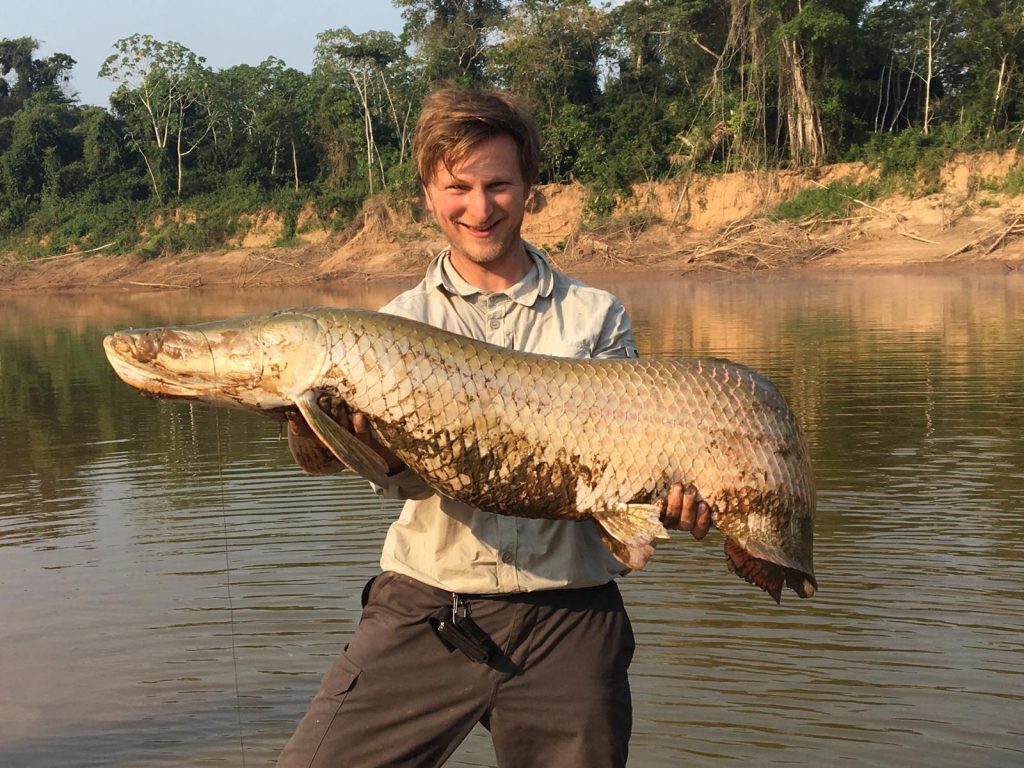
Not the biggest fish in the world, about 60-70lb but the weight is irrelevant, how many people can say they have caught wild arapaima in the Amazon rain forest on rod and line from a wooden canoe?!
You could be doing just that.
Amazon Fishing Tour Day 6: Go big or go home
Day 6 came and our penultimate days fishing was on the cards.
We had learnt a lot and felt that it was just about coming together, but time was against us.
The night before our guide again wanted us to try another lake, but as always, the choice is yours.
Would we get down the lakes or the river?
Come on, the river offers the mystery and the mystique that drives us carp anglers.
Yes, we might get something big on the lakes, but we’d know it was an arapaima if the rod shot off.
Back down the river it was and we made the decision to go big and brash.
Previous days on the river were difficult, its hard to find areas where you have a chance of landing a decent sized fish at all, couple that with our under-gunned tackle, we had struggled so far.
This is something I want you to avoid when you go.
But, a bigger rod scavenged from another angler, a spare reel loaded with 100lb braid and a doubled up 150lb fluoro leader finished up with a 2 foot section of 250lb braided leader was to be used that day.
We won’t go in to depth on tackle suggestion here or why we ended up with that set up, feel free to ask in the comments.
You can’t comprehend just how many snags there are, the whole river is basically a web of fallen trees battered down over the decades, take a look at this video by another angler on our trip:
Imagine trying to put a bait in that lot, let alone landing a fish, it’s tough but it’s all part of the thrill and that is what is under the waters surface.
In previous days we had kept away from these areas as much as possible as we really struggled to land anything of any size in the river because of our tackle and the snags on our first day on the river.
But with our ‘beast’ rod in hand and jumped up leaders we thought we stood a chance so followed the advice of the guides and jumped in to the snags where most fish are caught by them.
The locals use rope and a big hook on a hand line. To them rod and reels are hilarious, they land every fish on pure strength and we’re all just ‘senoritas’.
We caught quite a few fish that day, 10 or 12 I believe, our rigs were working well but any time we hooked in to something that felt bigger we lost it.
Very frustrating indeed, especially when you see huge arapaima roll over your baits and minutes later it tears off with your rig 100 yards in 3 seconds flat under 84 logs.
Our tackle, even the big boy rod and reel were simply not up to it.
If you are considering a trip like this, don’t make the same mistakes as us, follow our tackle guides that you get by enquiring through us and catch more fish.
Between us, we did catch some nice fish though, some random looking catfish and a stingray.
We had basically lost hope of banking something massive from the river.
Or at least in the locations we had been so far so we asked to go somewhere else, somewhere clear with the chance of a monster.
Later that day we were taken to a very big deep pool.
It was incredible, the ‘pool’ must have been 500 yards across and the water was very low, in high river it would have been much bigger.
There were minimal snags, at least on the surface, most casts came back clean so we were confident of having a better chance of landing anything we hooked here.
Then, I heard one of the guides say something I recognised – “piraiba”.
Hang on a minute.
“There’s Piraiba here?” I asked in my makeshift Spanish.
To which I was told yes, 3 meter piraiba, was the reply.
Wow.
We found our target for the final day then.
Later that night I told our main guides about the piraiba claim – they couldn’t believe it either – they hadn’t heard of any piraiba being this far up the river system.
But after confirming it through several local sources, with all saying there was plenty and they were huge, it was going to be our target for day 7.
Amazon Fishing Tours Day 7: The might of the piraiba
The final day of fishing was here and what was about to come will stick in my mind forever.
If anything sums up our trip it was what happened on this day.
If there is ANY reason you should use us at Gilly to book your trip, rather than going direct, it’s to ensure you make the most of the story that is about unfold.
We were hugely happy with the week so far.
We had caught (and lost) some absolute monsters and although the experience was far beyond what we could ever imagine, we hadn’t got that trophy shot yet.
It would be nice to finish on a huge high and catch the hardest fighting freshwater fish there is – even a baby.
So we abandoned all hope of catching several fish that day and went all-out for something huge in the 80ft deep hole.
When you consider the river was a good 40ft lower than normal, that’s a big hole, it must be home to something mythical.
Within a few minutes my rod ripped off, clutch burning and rod bent over backwards – we’re in.
After a few minutes of thinking it was something huge, it wasn’t, a small Jau catfish of about 15lb. A lovely fish, but not our target.
We sat in that area for an hour or three, holding out hope, the guides wanted to move several times but we stayed nonetheless.
Moving around several areas of ‘the hole’ we tried and tried, which in 40 degree heat with no shade is very difficult.
We decided we needed to move to resurrect confidence.
A change of plan and one that meant our dream of a piraiba was no longer a reality, or was it.
Luckily the guides knew another spot where the piraiba calls home and we decided to move on.
During the week we managed to set up some basic lines of communication with our boat crew, which as the days went by, meant we were better working as a team to get the most from your trip.
Earlier in the week we were at the mercy of our guides and couldn’t use our angling knowledge, trust me, it is useful even in the Amazon.
For example, on our second day on the river we spotted an area by a small inlet covered in snags that just screamed ‘fish’.
Our guides said “no fish” but we persisted, fished it and caught loads there including the 200lb arapaima that’s in the earlier video – it was our new hotspot – we started to stand up for our views and trust our angling instinct.
You should follow the advice of the locals for sure, but remember that they are fishing with hand lines and for dinner, your angling intelligence is something that covers the world.
Fishing close to an area like an inlet on a river covered in snags is something different that will attract fish.
Follow your gut.
Anyway, we decided to move to this other spot the guides knew piraiba frequented.
In the process of bringing the rods in, we hooked in to a paraya too, a magical fish with 3-inch teeth!
After what felt like an eternity boating up river, we ended up at a tiny spot.
An eddy on the near side with very fast rapids on a sharp bend which was no more than 30ft wide, a complete change from all the other spots.
The river in this area in its low state averages probably 100-150 yards wide, with a slow sloping sandy beach on the nearside of corners and a sharp drop on the far bank down to about 30-40ft.
The current is difficult in most areas but this was intense, nothing would have held in that current so we were basically trotting a half pound dead bait.
Beaten up from the morning and with little confidence in our tackle being able to handle anything we hooked in this area motivation was low.
But, within ten minutes I had caught a small Jau catfish and lost something bigger under the boat, nothing massive but it was a boost.
Though we had been snagged on every cast which was becoming a pain.
A few minutes later we would see and hear a moment which will stay with me for the whole of my fishing life. 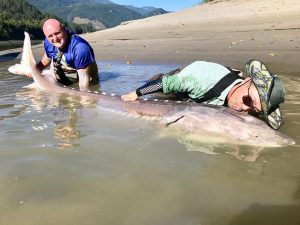
It’s etched on my brain, even writing this now I can see and hear it.
A moment that sums up our trip and gives us another reason to return, to add to the previous list of about a million reasons.
Luke, who you may have seen in some of the videos on this site is used to catching some of the biggest fish in the world. On his list of captures are huge sharks, marlin, giant sturgeon and hundreds more from across the world.
To give you some context, he was using the same tackle fishing in the amazon that he was previously using the week before fishing wrecks in Costa Rica. He was really giving the fish the ‘what for’ when they were hooked.
He had not been having the same issues as us earlier in the week getting constantly snapped up in the stumps, logs and snags – well, at least not as often.
The rod that was about to rattle off was a couple of thousand pounds worth, it was incredibly strong and meant for handling the biggest sea fish species on the planet.
Coupled with a top of the range sea fishing Daiwa of about the same price range that was loaded with 200lb braid, 300lb leader and a marlin hook at $20 a piece.
It was Luke who was going to experience first hand what came next.
Within a couple of minutes of casting back out after my hook up, his rod bent over backwards, his clutch that was COMPLETELY locked tight to the touch ripped off and line was peeling off his line within seconds.
He lifted the rod and almost got pulled in, the rod was crippling and the reel screeching as Luke battled to stay on the boat, the fish was second priority at that point.
It took off down river and Luke was trying his best to stay in the boat while his clutch melted meters of line a second and BANG.
The 300lb braid, freshly put on that day and checked by the perfectionist angler, snapped clean.
No snag, no log or dodgy braid – whatever he was attached to was just that big and powerful that his tackle could not cope.
The guides both whispered “Piraiba” the moment it took off.
We were all distraught, the opportunity presented itself and we lost it.
That’s fishing I guess, the fishing was quiet from there on the final day and we called it a day early in an attempt to avoid the mosquitos on the way back.
Day 8: The departure
On the last day you’ll follow the same routine and get up early for a breakfast.
After that it’s a matter of waiting for the plane to land so you can say your goodbye’s and get back in the air.
You’ll be dropped at Riberalta airport for the flight back to Santa Cruz where your paid-for trip ends.
From there you can do what you like.
We decided to book up in the top hotel in Santa Cruz for a few nights to relax.
I wouldn’t do this again, instead I’d either stop in Miami or go straight home, Santa Cruz is not for me.
Our trip in a few sentences
If you’re just skimming through this article (I don’t blame you it’s long) and want a quick summary, this bit is for you.
We caught a lot of fish, but it is the ones we lost, the ones we saw next to the boat and the ones that beat us up that will keep us going back to the Amazon at any opportunity possible.
It’s an incredible, heart thumping journey that I am struggling to put in to words. An experience, regardless of the fish you catch, that I hope every angler on the planet can have one day.
If you’re thinking of heading to Thailand or on another fishing holiday this year, don’t, go to the Amazon and use the form below to let us put you in with the right people and make sure you put as many fish on the bank as possible.
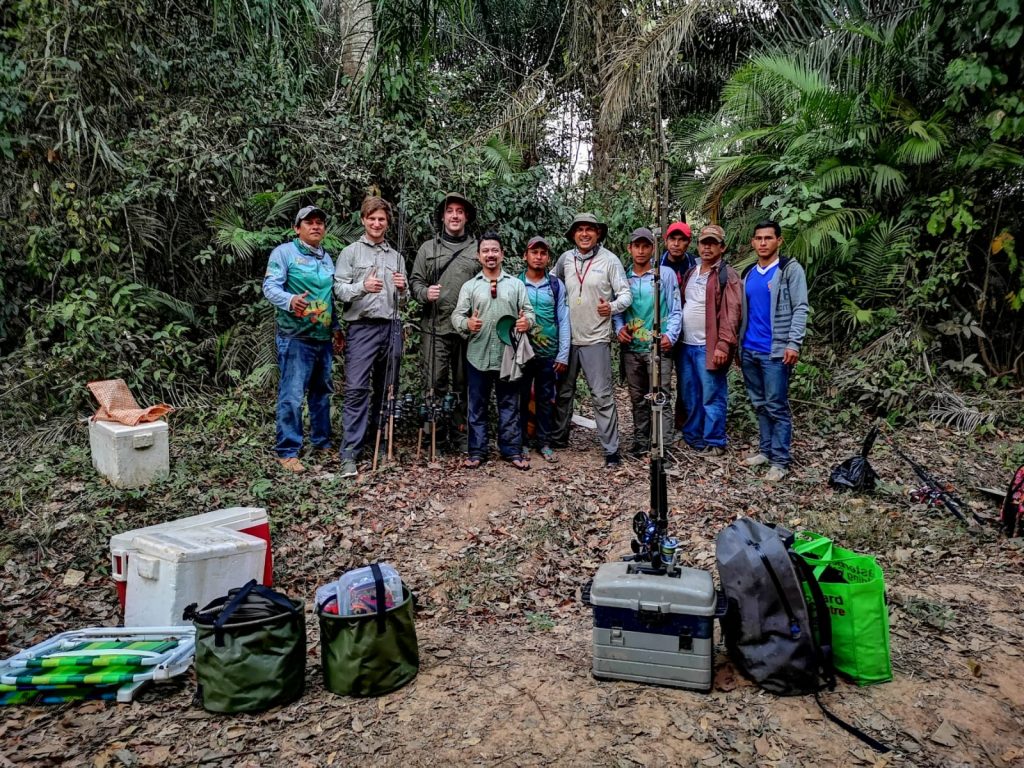
How easy is it to get to the Amazon fishing?
Actually, it wasn’t too bad and the flights could have been better planned to make it easier on us.
We spent about 55 hours from door to door, which was hard work but we spent half that time lounging in airports and you may be able to avoid some of that time.
The cocktails and the food help, especially in Miami.
WHEN I go again I would still do the same and get straight there as quickly as possible rather than having a stopover on route.
The adrenaline keeps you going, sleeping in an airport in the middle of nowhere, though annoying is part of the journey.
But, for those looking for a bit extra comfort and book through us, our operator will put you in a 5-star hotel in Bolivia for one night on the way to break it up a bit.
I would suggest a siesta for a couple of days on the way back, though the logical stop is Santa Cruz, don’t do it.
Santa Cruz is not a tourists town.
I’m sure there is loads to do, but you have no way of finding out info, no-one speaks a word of English.
The food, even at the best restaurants, is tasteless and boring and the service is poor and arrogant.
We stayed in the top hotel in the region and were highly disappointed.
Surely there are loads of jabs and vaccinations to get?
Not really, as long as you’re up to date on the regular stuff like TB, Typhoid and Hep A and B you will only need to have your Yellow fever vaccination.
Which, although we were told was a necessity to travel in South America, we were never asked to present our certificates.
Yellow Fever jabs cost us about £60 I think – make sure you get it just in case.
The only other thing you’ll need is a course of Malaria pills, just make sure you do not get the ones that cause sickness in sun rich areas.
We’ll take you through all of the needs and pills to get within our brochure if you enquire through us.
We didn’t have trouble with illness etc during the trip. When we got back we struggled with flu like symptoms, but this will be random, on the trip there was limited dodgy stomachs or runny noses, the food is all fresh.
What tackle and equipment will I NEED?
We cover this in detail within our tackle guides that you’ll get by booking through us but here’s some brief insight in to what we did.
We overspent by about £1600 between the two of us on things that we did not need on the advice of our guide. Not to mention the amount of money we spent on buying equipment that wasn’t suitable at all, it wasn’t up to the job, which runs in to another couple of grand.
The problem is that all the amazon fishing tour guides that you will find online are not fisherman like you and I, they are game fisherman, sea anglers and have never fished in the UK or in Europe (or at least not since they were a kid).
So, whether you’re a perch fisherman from Norfolk, a carp angler from London or a pike fisherman from Norway the guides you will pay for have NO WAY of translating to you the type of tackle you need to maximise your catch rate.
Of course you can just buy the stuff they use, but I’m not about to drop several grand on a weeks fishing.
As an example of this, I took with me 3 x 3.5lb TC Nash Snides. Under recommendation of our guide who was trying to translate his US equivalent to UK, they were next to useless and cost me about £600 I think.
Trust me it is hard for you to find a rod that fits the criteria you need and although the Snides fit the bill according to brochures, it is severely under-gunned.
You need to find two 6-7ft rods which are not one piece so can fit the plane, is at least 5lb TC (I was told 3lb before I got there) and is available in the UK.
Not to mention the lure rod requirements.
A great rod, just not cut out for this type of battering, trust me it felt like I was using a quiver tip.
It’s not the guides fault, it’s your responsibility and they do their best.
Their speciality is finding the fish and putting you on them, not knowing the ins and outs of every countries take on rods specifics.
By no means is this a reflection on the trip, I just felt that with a better insight in to the tackle I should have taken with me, I would have caught more fish, and that is something I want you to avoid.
If you book your Amazon fishing tour through us, not only will we pass you over to our approved provider (who we use too) but, you will get our very own tackle guide, do’s and don’ts, a UK-based round up of what you actually do and don’t need and as much of our advice as you want, for free – You’ll also get their advice and materials as normal, but we’ll help you translate.
I wish I had that.
Though we make a commission for our help, it won’t cost you a penny more.
You should allow at least £500 to cover your tackle needs, probably double that if you want to be really prepared but this could easily run to £2k if you’re not careful and follow the tackle requirements you’ll get from your guides/operators that we don’t work with.
You basically need ludicrously strong tackle, your carp gear and spod rods are no where near strong enough (trust me) but your reels might be up to the job depending on what you have.
I would advise against taking your carp reels though, I have some great Daiwas that have dealt with everything fishing in England, France, Spain and Thailand have thrown at them but a £50 back up reel I took with me was far better matched.
Again, we’ve got you covered.
Bad points?
There are not many and those that do exist are part and parcel of the trip but we won’t sugar coat it for you.
Travelling is hard, it’s at least 40 hours door to door with several frustrating stopovers.
There are bugs, it’s the Amazon, but not many and nowhere near what we expected and its confined largely to sunset at the time of year you’ll be going.
If you go as a pair or three, you’ll have no-one on the boat with you all day that can speak any english. The canoes are limited to 4/5 max and are difficult to fish with 3 people in tight moving water so there is no room for a non-fishing English speaking guide.
For this reason we can offer a ‘Gilly Service’ where one of our guides, who has been there and done that, will come with you for a supplemented fee if you need a friend for the trip.
The food is a little samey, especially the breakfasts but you’re not there to eat.
The tour-guides won’t be able to tell you accurately what tackle to take as they don’t know European fishing equipment.
If you enjoy your sleep, start stocking up on it at home as you won’t be getting much with all the excitement and consecutive 12-hour fishing days followed by evenings around the food table laughing and drinking local spirits.
What luxury items should I consider?
Camera equipment is essential, think small like a GoPro or a small camera, when we go back we will take a drone too.
I wouldn’t recommend a drone on your first visit though, focus on the fishing and also if you’re largely based on the rivers like us then using a drone will be difficult while hyped up and getting used to fishing from a canoe – the lake boats are larger and you don’t have to worry about the current.
Mozzy spray and lots of it, you don’t need it in the morning or in the evening in camp, just on the journey from the rivers/lakes in the evening.
There’s no way of getting around it, you’re in the jungle, and there are bugs but you only need worry about it for 20mins a day.
Amazon Fishing Tours: What will it cost me?
We spent around £7k each on the trip.
Broken down, the tour itself (including internal flights, fishing, food, guides etc) was £8k, flights were another £2k and we spent around £4k on tackle between the two of us.
This was everything, flights, hotel for 3-days after, spending money, completely new tackle and clothes.
You do not need money when you’re there, there isn’t anything to spend it on other than tips!
We overspent by about £2k on equipment we did not need or use and most of the stuff we were recommended wasn’t fit for purpose thanks to our guide translating sea/game fishing tackle in to UK carp metrics which we were used to.
When I go again it will be under £5k, which if you follow our advice, will be about right for you.
It will be less for you if you have some important parts of tackle and are not bothered about the time you fly or getting a hotel afterwards.
If you allowed £5-£6k all in you wouldn’t be counting pennies and have everything, £4k would be minimum.
Is It Worth £5k?
1000000% it’s worth it, knowing what I do now having experienced it first hand I would say it was a cheap trip when you look at the £ vs life experience.
I’d save a few quid and do things slightly differently.
For example I’d probably fish the river every day, I’d take stronger gear and the right things.
I wouldn’t spend the extra cash staying in Santa Cruz and I’d not bother with a lure rod and the 100 lures we bought.
I don’t know anyone that has been and every angler I have told since has been intrigued and shocked as to how easy it is.
Make it happen and let us help you get it right.
Will I die?
Probably not.
We didn’t see many caiman and not a single snake or spider that could do us any harm.
The scariest part was the flight in a small 4-seater plane, but that’s just because we have weak stomachs!
Please, please, please go to the Amazon fishing. Whether you enquire through us or not, you have to go and its a lot cheaper than you would expect for the absolute trip of a lifetime.
Use the button below to enquire now.
